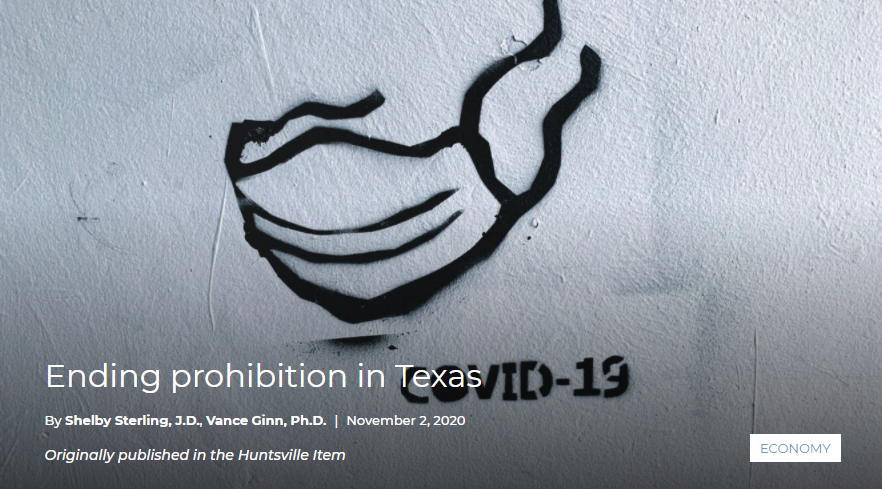|
Americans want to return to work after months of joblessness due to the COVID-19 pandemic-related business closures. But too many Texans can’t—because of the industry they work in.
There was some hope that this might change after Gov. Greg Abbott’s executive order that took effect on Oct. 14 expanded the state’s reopening plan by adding bars to the list of certain businesses allowed to partially open. But one of the stipulations in the order to open bars to 50% capacity is already proving hardest to overcome: gaining the approval from the county judge. Despite low COVID-19 hospitalization rates in most of the 22 trauma service areas across the state, many bars do not have the judge’s approval they need to open. This limitation—among others—hits many Texans while they’re down. For example, Texas’s 8.3% unemployment rate in September is historically high and substantially higher than the near record-low rate of 3.5% in February before the COVID-19 pandemic. Under the latest order, fewer restrictions are placed on those areas that are below the 15% threshold metric of COVID-19 hospitalizations as a share of total hospital capacity for at least seven consecutive days. These areas can have most businesses expand to 75% capacity and allow bars to open to 50% capacity with the approval of the county’s judge. But if an area’s metric is above this 15% threshold for seven straight days, then certain businesses are rolled back to 50% capacity and bars must close. Fortunately, this order allows a more targeted policy approach to focus public and government assistance on populations that need it most. The chosen metric also helps bring a more objective measure that’s less susceptible to manipulation—intentional or otherwise—while supporting the government’s initial argument for preventing COVID-19 from overwhelming hospitals. While this is an appropriate and safe step towards opening Texas, uncertainty remains for employers and workers who are left in the dark without a timeline for when the state will be fully open. In other words, when will Texans have their freedoms back so that they can live out their dreams responsibly? This sort of certainty is what will help give people a sense of calm in this storm and support a more vibrant economy that will lead us back to a robust situation like we had in February. Adding to the current uncertainty, local officials are making bad decisions by refusing to rely on the evidence. Specifically, many of the major county judges insist that the threat levels are still too high for any further reopening efforts. But the data indicate otherwise. In fact, as of Oct. 27, most areas where 94% of Texans reside are maintaining a hospitalization rate below 15% with only the three trauma service areas that include El Paso, Amarillo, and Lubbock on the restricted list. The evidence did not stop the counties of Dallas, Harris, and Travis from firmly putting their feet down when it comes to reopening bars. Judges in Dallas and Harris counties quickly announced their rejection of opting into the order despite their preceding seven-day COVID-19 hospitalization rate at that time holding steady around 8% and 4%, respectively. Dallas and Houston are not alone. The Travis County judge, which houses the state’s capitol in Austin, announced its intention to keep bars closed until further notice. Its preceding seven-day average was even lower than Dallas and Houston, running below 3%. In fact, the Austin area’s rate has been below the Governor’s 15% threshold since July 22. With numbers this low and personal responsibility in place, why shouldn’t bars and similar businesses be allowed to open? Failing to rely on the data when making life-altering decisions demonstrates that these decisions are not based solely on the health, safety, and livelihoods of Texans. If they were, Texas would be further along to fully opening, and Texans could live their lives more freely. The evidence supports further reopening and local officials would do right by Texans to allow it. One thing is clear: Texans want to get back to normal. https://www.texaspolicy.com/ending-prohibition-in-texas/ Comments are closed.
|
Vance Ginn, Ph.D.
|


 RSS Feed
RSS Feed